July 19, 2015
Martha O'Kennon
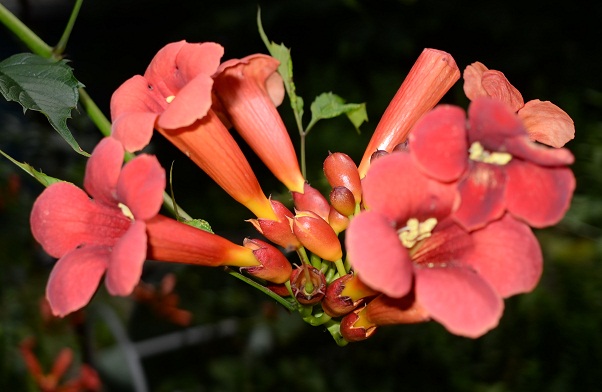
Midseason is upon us. Heat, humidity, rain and mosquitoes. But we feel especially sorry for our comrades in other sections of the world who really
have awful heat and drought or have even more rain and flooding. The trumpetvine keeps putting out new "trumpets" and then dropping them after only a day or so. I've stopped pinching back the asters. They will be flowering by the end of August or beginning of September. (I just looked back at the
2014 issues. About the first week of September 2014 is the first time I show pictures of asters, so I figure they were probably blooming a bit earlier. I wasn't able to send so many pictures just through email.) So we expect the asters and even sooner the thistles with their beautiful admirers, the green bees. New toadlets are deserting the pond slowly, and the baby ones are growing too.
Remember that there is information in the name of the file for each image. You can see it by mousing over the image - look at the lower left of the screen.
Or you can click on the image to get to the (usually) larger image. Then the info is displayed in the address line above. If the image has been cropped
so that clicking on it doesn't result in a larger picture, you can always hit control plus at the same time to increase the size.
I walked over to the prairie garden at the college again yesterday evening. To my surprise, the flourishing milkweed was over, and along with it many of the red and black insects. This little grasshopper was clinging to a plant, and so was this very large spider. At another small garden there was a great black wasp fluttering to and fro in the goldenrod, which is blooming fully almost two months early.
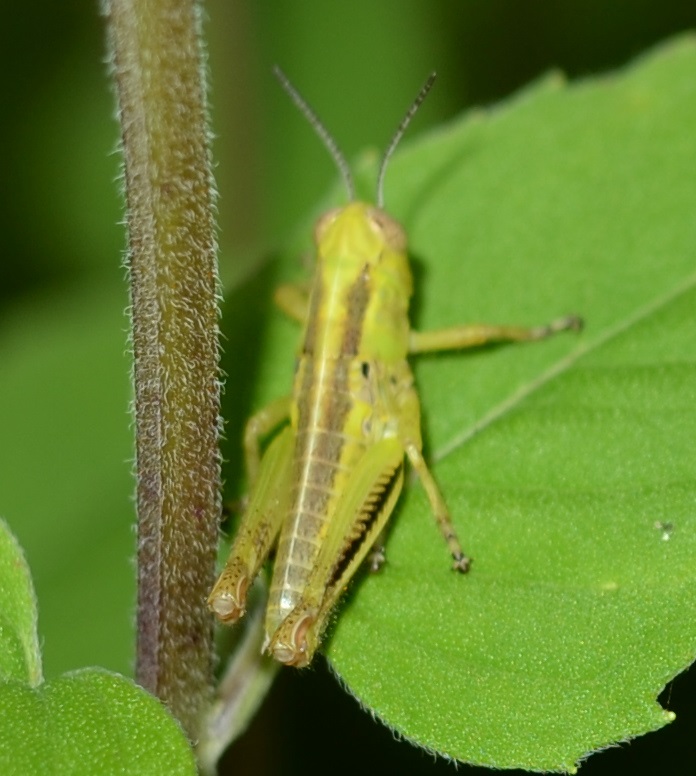

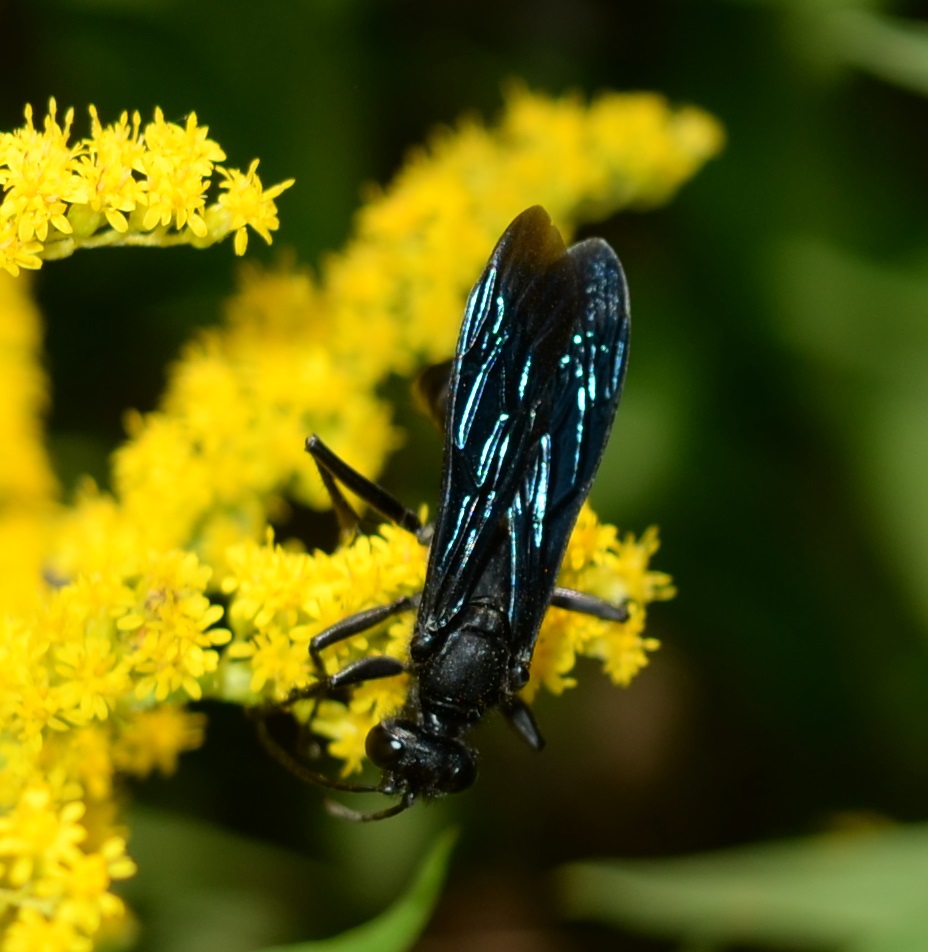
They say that these big bumblebees with the black abdomens are carpenter bees. I'm not sure I believe them, but maybe... It looks
very stylish on this yellow prairie flower. The purple (really pink) coneflower attracts butterflies - here are a monarch; a red admiral - I've never
seen so many of them; the next is a silver-spotted skipper; and here is another hairstreak - like all the others you've been seeing,
it's the banded hairstreak. It is bending way over, apparently trying not to let the huge ogre hit it with that big machine with the
bright flashing light.
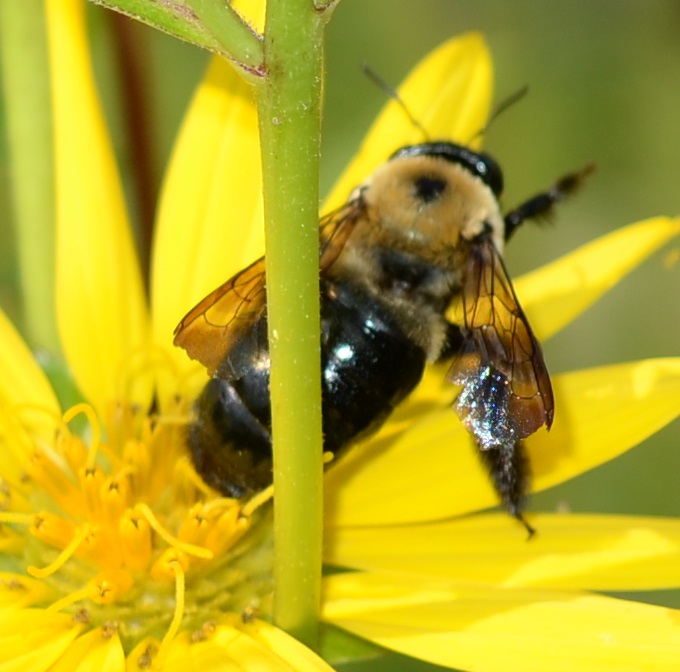
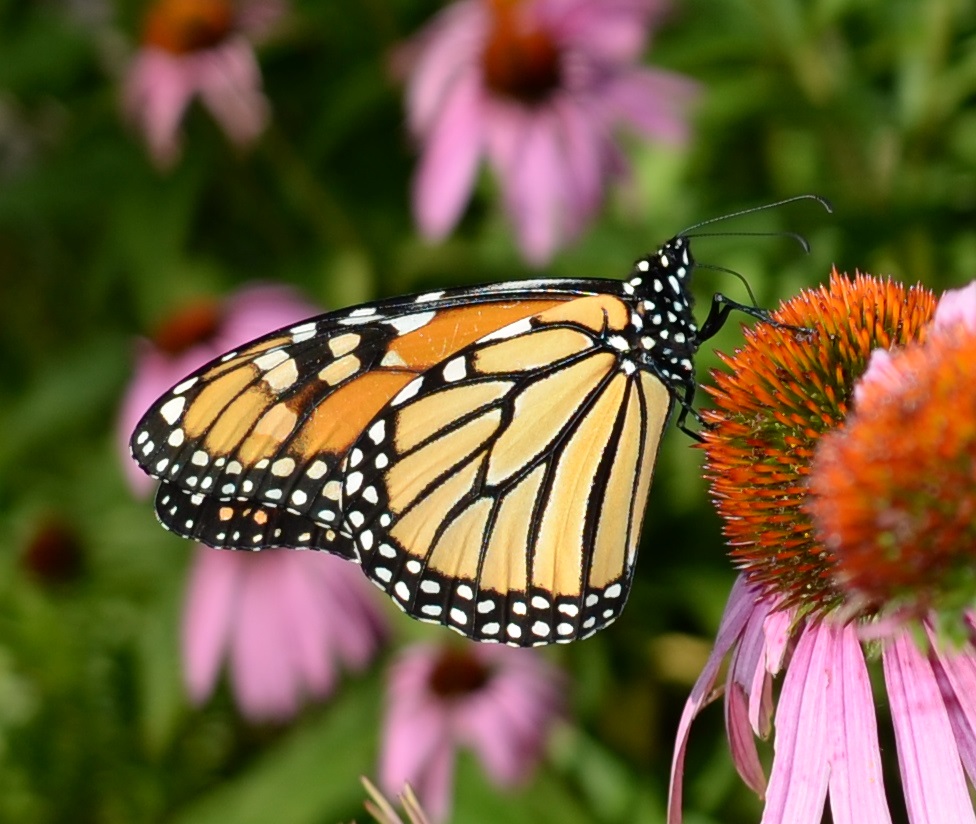
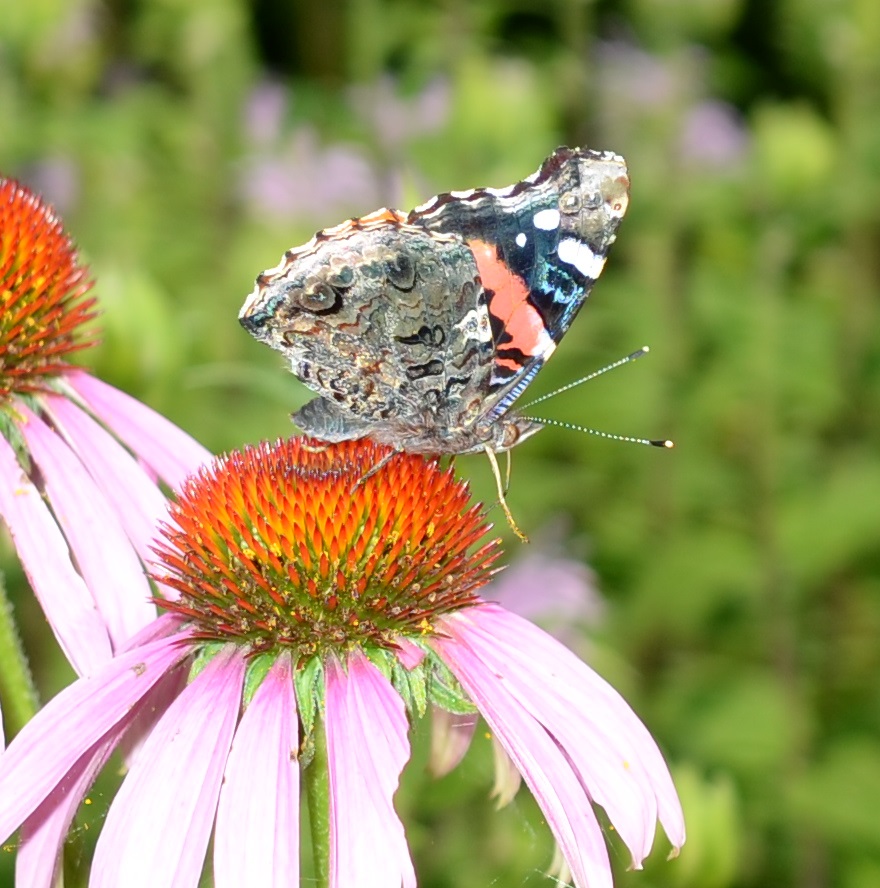
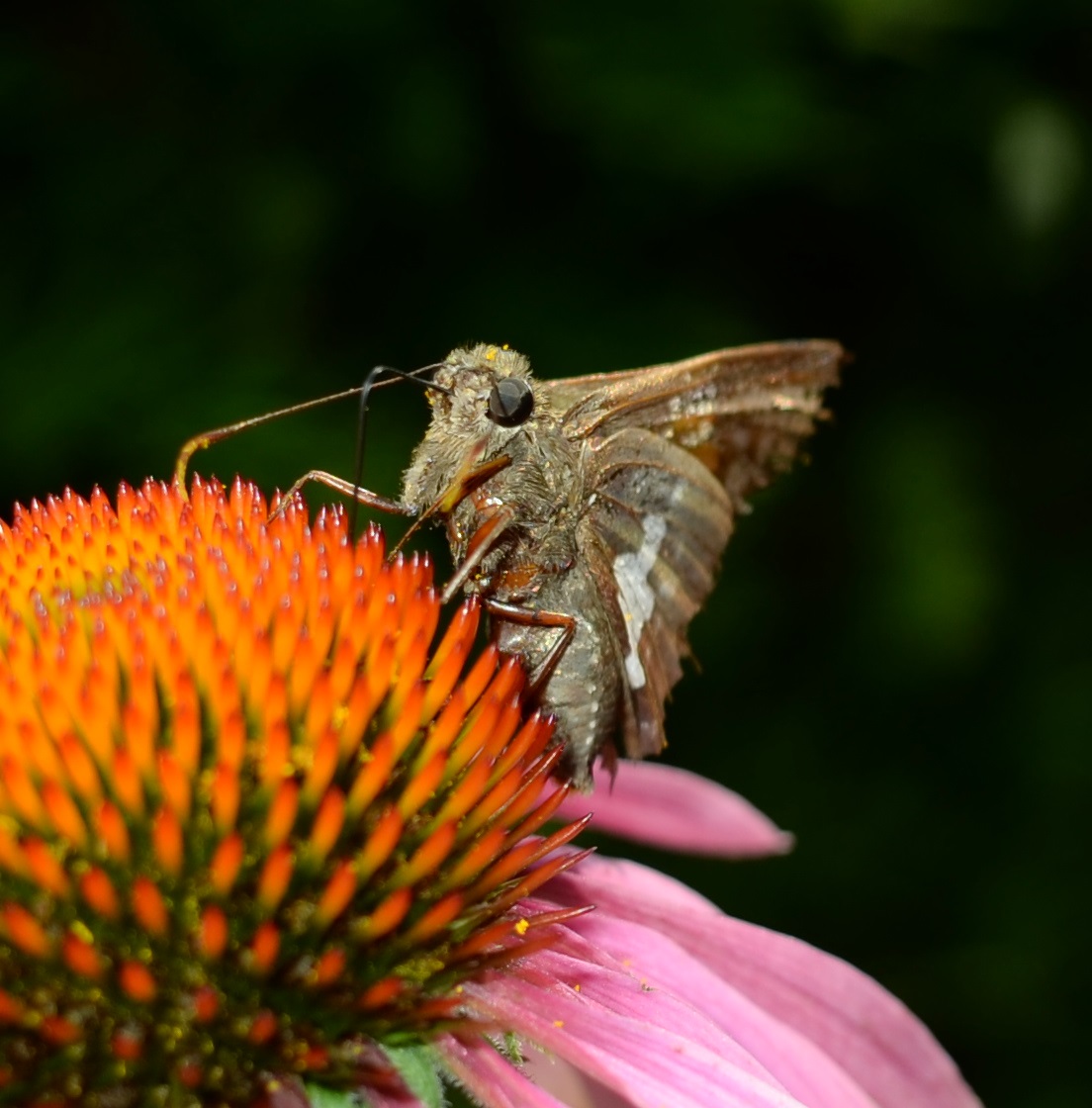
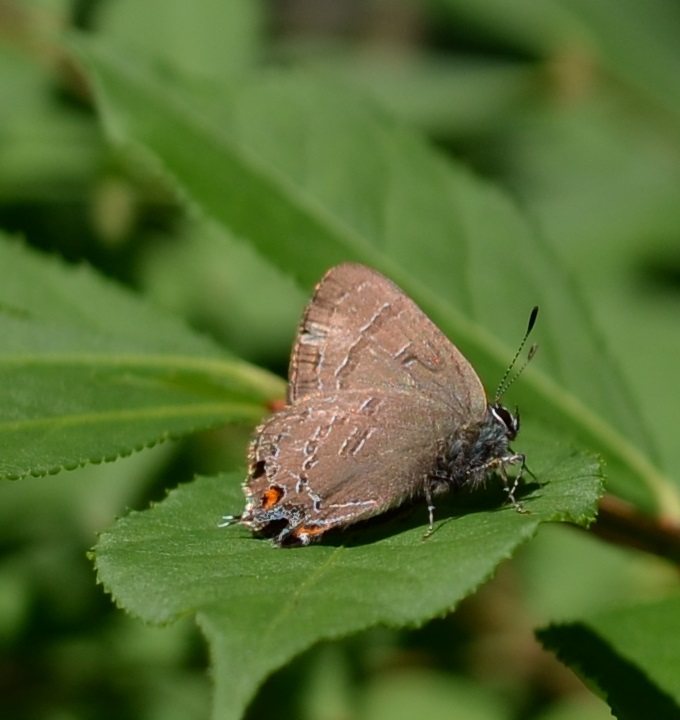
While we're still watching the early goldenrod, here are some wasps we finally identified. The first is one I thought at first
to be a potter wasp, but was finally able to find one that matched in bugguide. Mouse over the picture and you can see the scientific names of these wasps. Usually when there is a hypen "-" after a name, that is a substitute for a question mark "?" which can't be used in a file name. And finally, some of the milkweed already has its pods. I plan to go over and grab a ripe pod to flail away with in my back yard and see if I can't get some of the good stuff going.
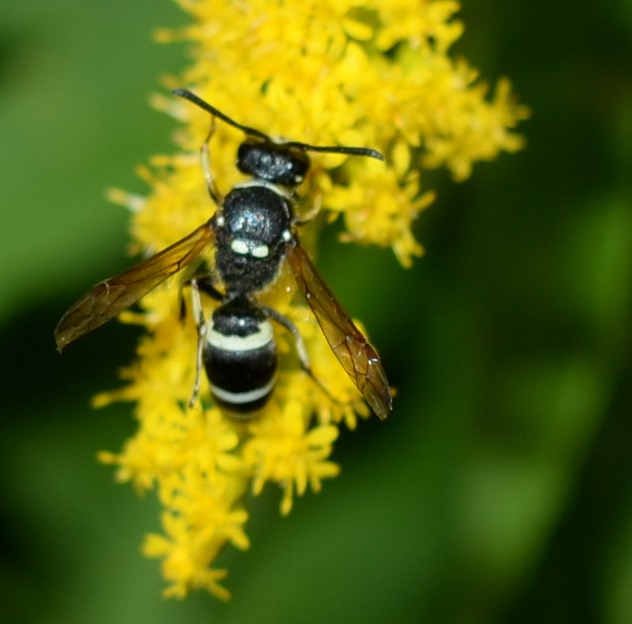
.jpg)
.jpg)
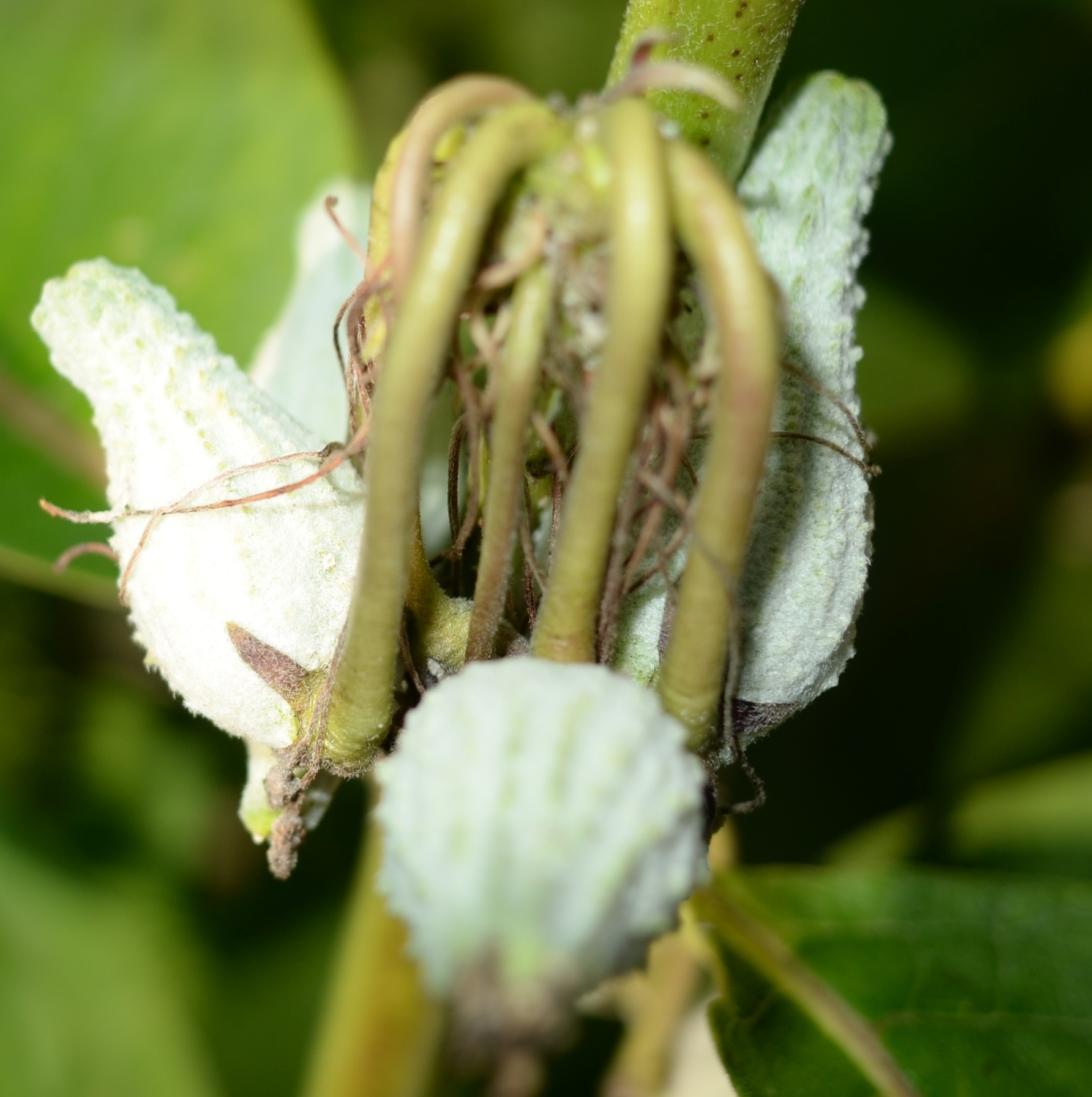
One more glimpse at the prairie garden before we toddle home. Pretend you are carefully parting the stems to walk from one flower to
another. Zoom in and explore. The secret of these prairie plantings is that they are an example of sustainability and permaculture,
something that we plowed and plowed to get rid of in earlier days.
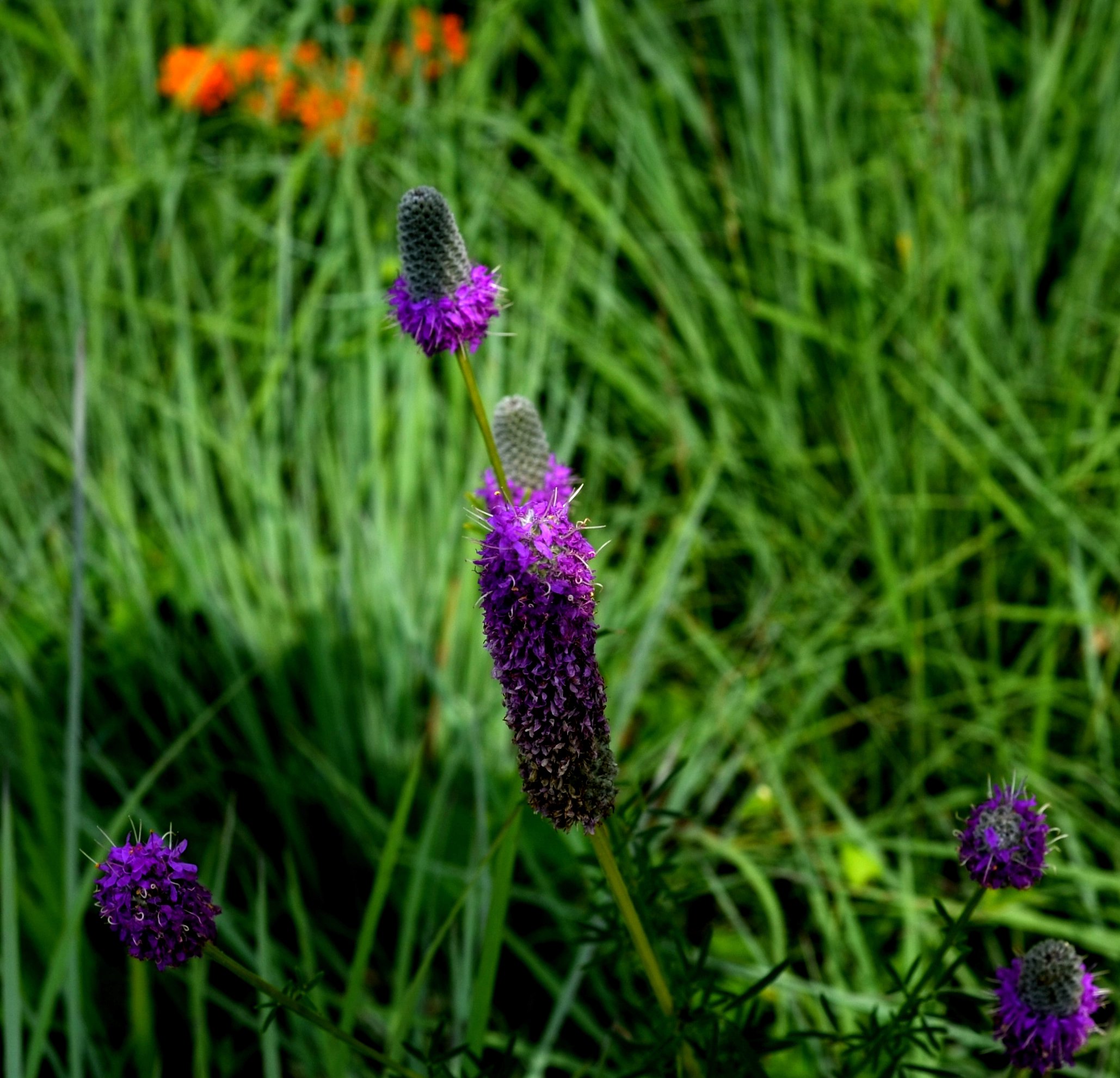

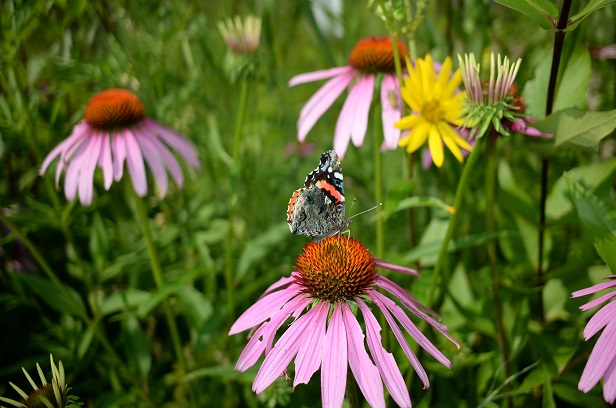
Let's go home now. The flowers blooming now are mostly the day lilies, and most of them are blooming one blossom at a time. So
let's spread them out next to each other. Day lilies are great plants for a wildish garden: they come in splendid colors to add a touch
of civility to what is really a quite wild garden.

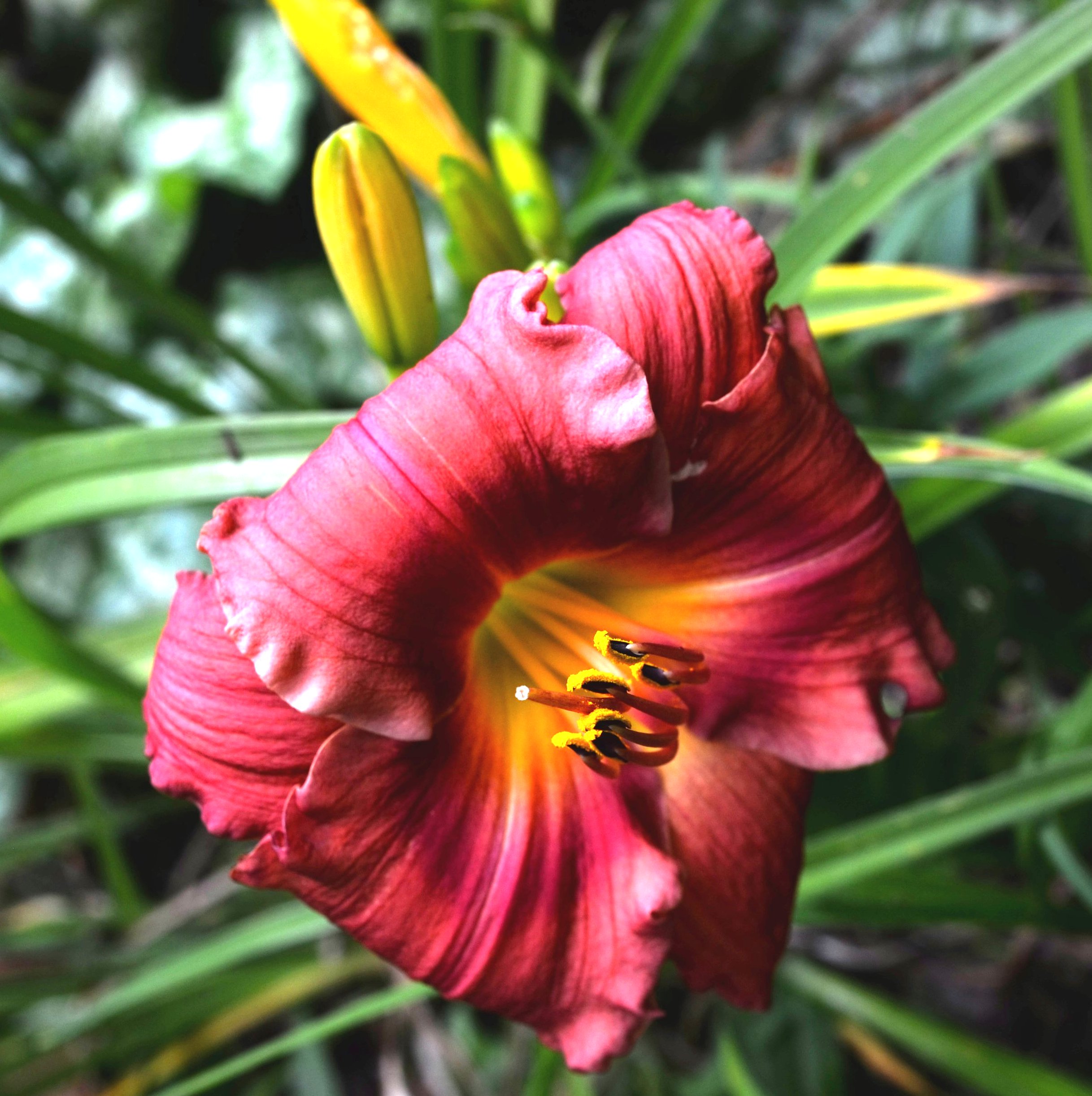
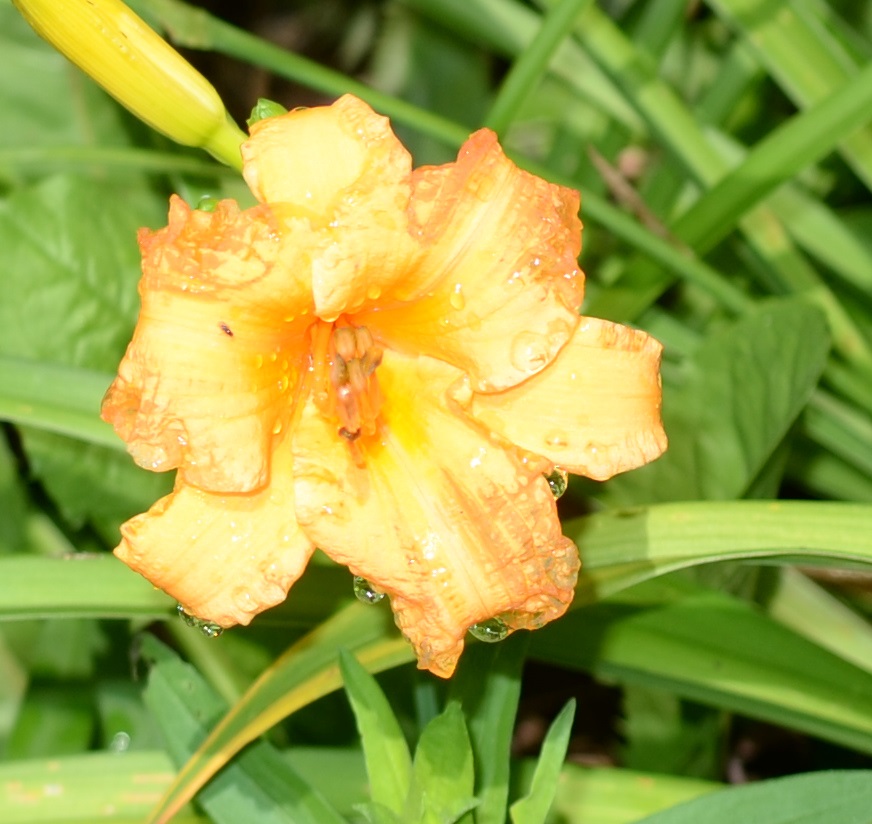
The bugs (true bugs, as they say) are diversifying like crazy. Here's another assassin bug in a late nymphal stage. It seems to like the
coneflowers too. Another bright green stinkbug (totally stinkless if you leave them alone!). The white fluffy fellow is a wooly aphid. Like most aphids they produce a sweet sap that ants like. When I'm lucky enough to catch one flying, I pop it into my mouth and taste the
sap. Now, now, disgusting is in the tongue of the observer... :-)
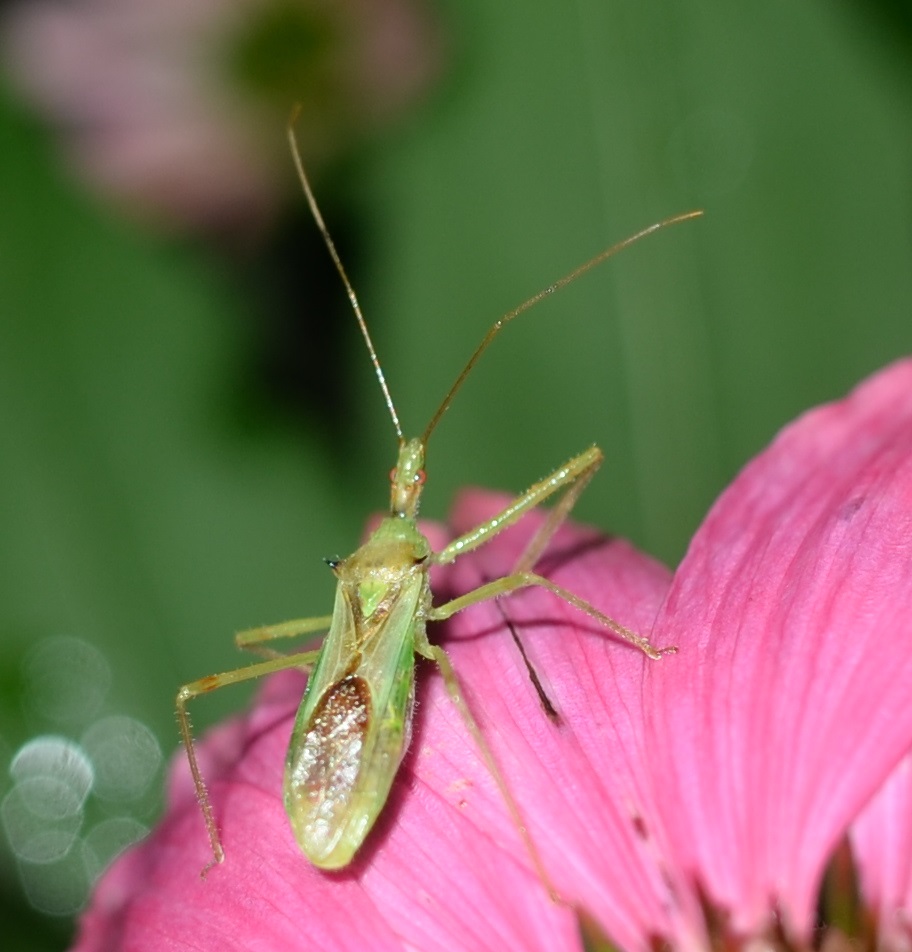 ;
;
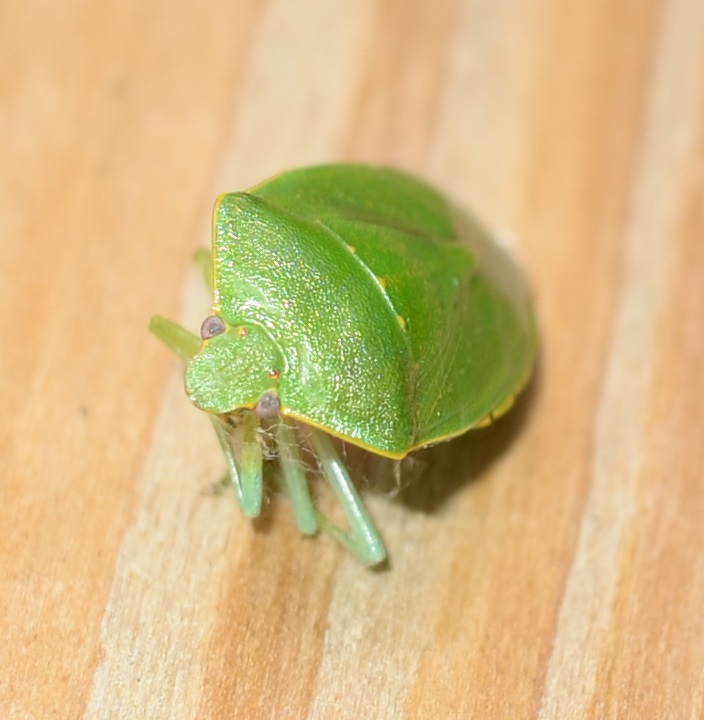 ;
;
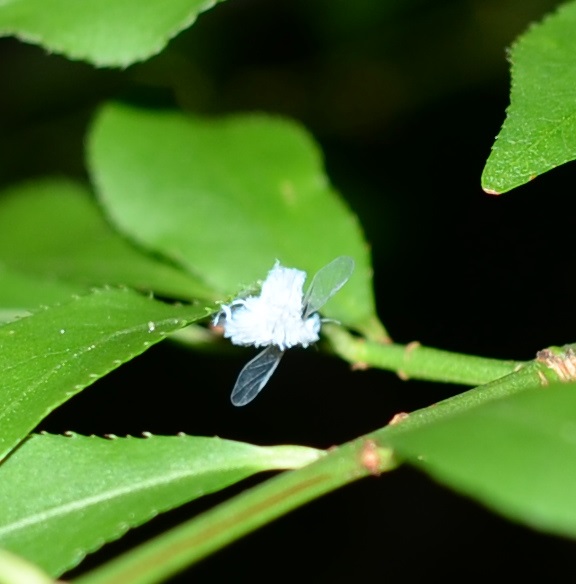
Here's a bright green leafhopper or planthopper, still in a nymphal form. Zoom in on the picture to see arrows pointing to the wing buds. A treehopper I'd never seen before. And a quick visit to
see how the thistle treehoppers are doing. Are those eggs right over the head of the hopper? We will have to keep our eyes peeled to see
how that little colony proceeds.
;
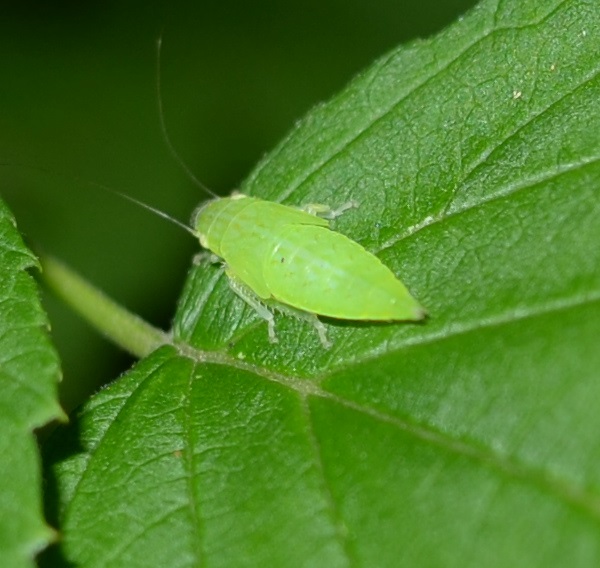
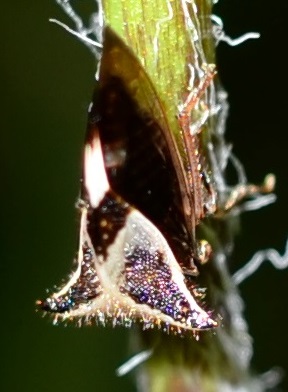
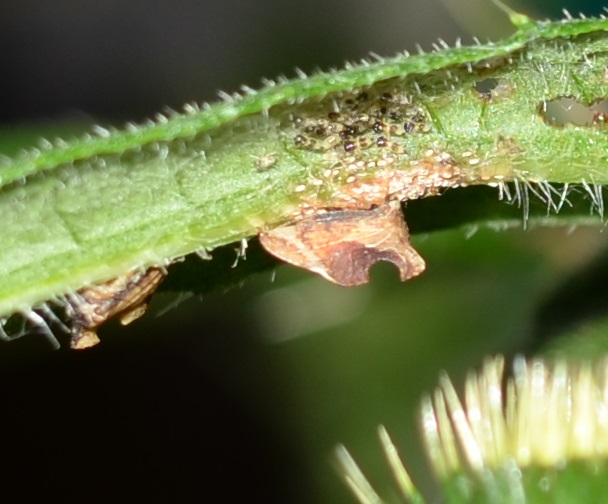
The beetles were there, but some of them I can't tell from the others. There was this shiny one, then one that looks quite like it but
a dull brown. A lightning beetle with what looks like a maraschino cherry on its head, sort of like a red light bulb. But everyone knows
the light is actually in the rear end of the beetle. And one last picture of the japanese beetles mating. Look carefully at the fork-like antenna. And also note the huge holes they have made in the raspberry leaves. (Not to worry, I tore my arms to pieces picking all
the raspberries that were left. I think I still have eight or nine quarts in the freezer.
;

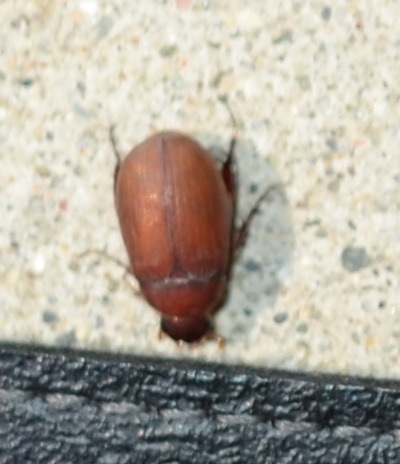
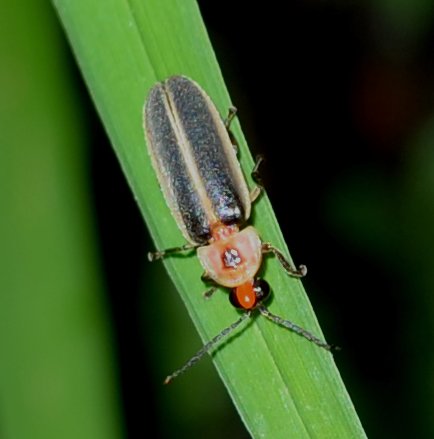
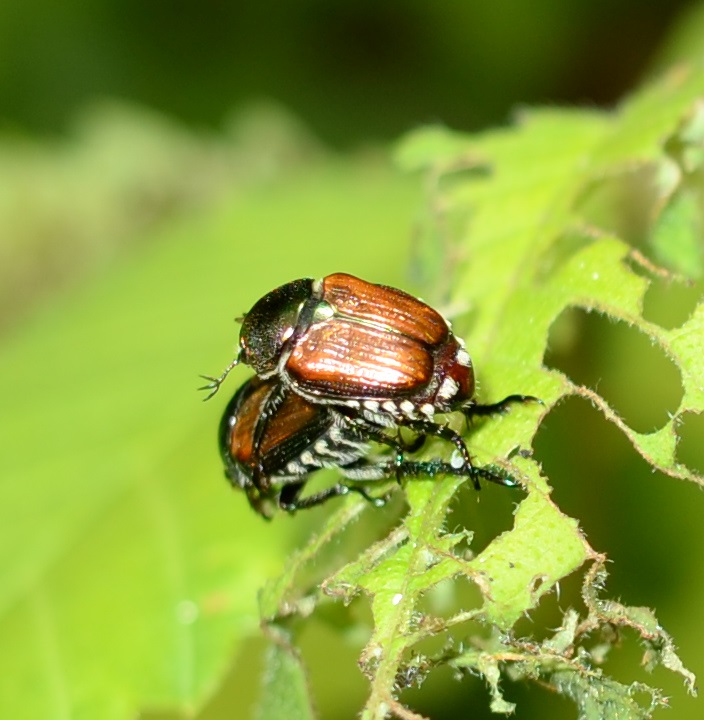
One thing that we have that the prairie doesn't is the trumpet vine. It attracts many kinds of bees and wasps. Of course, the trumpet vine isn't the ONLY delicacy on the bee menu. Compare the size of this tiny bee and the coneflower's cone that it sits on. This is a very tiny bee indeed.
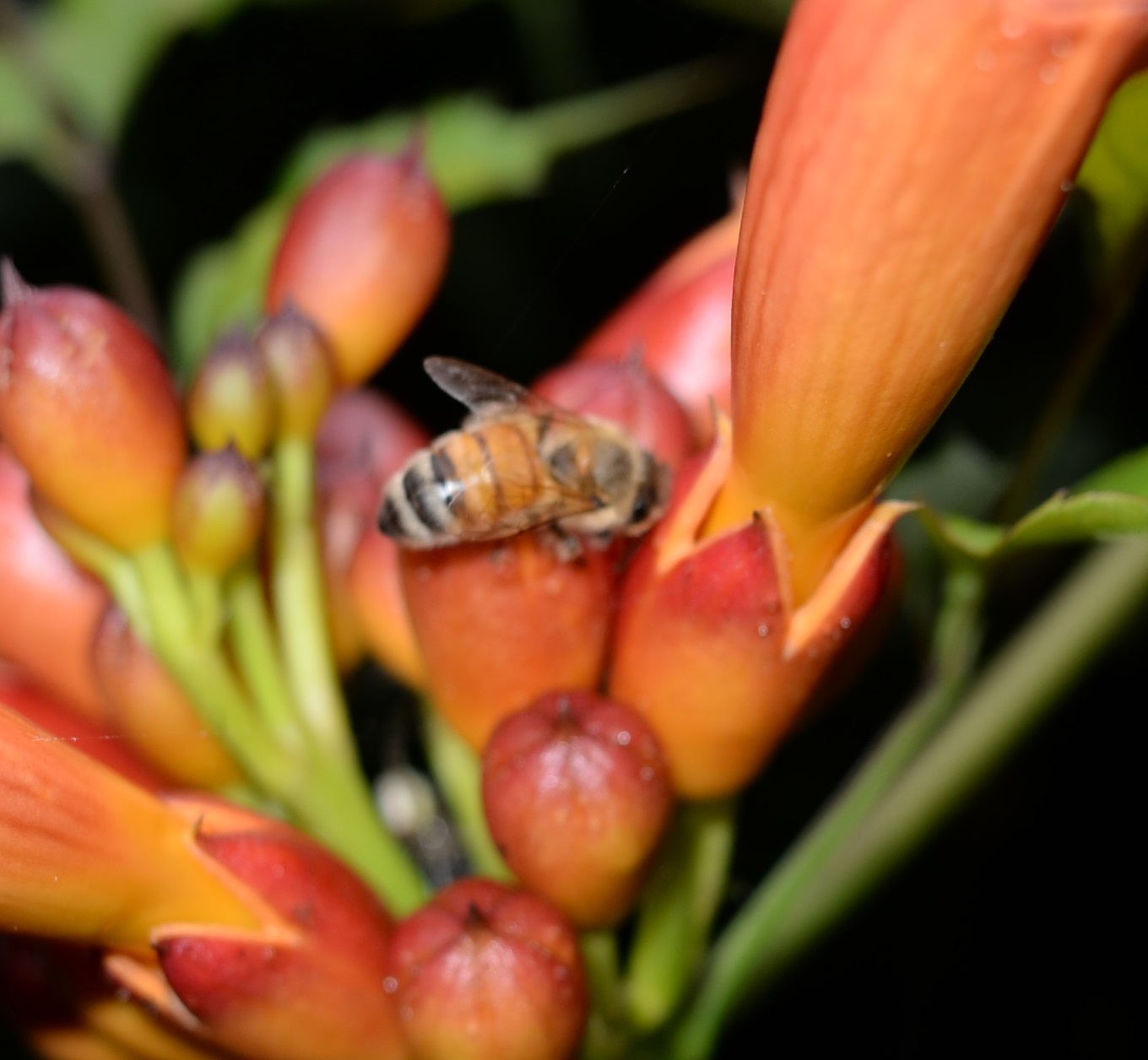
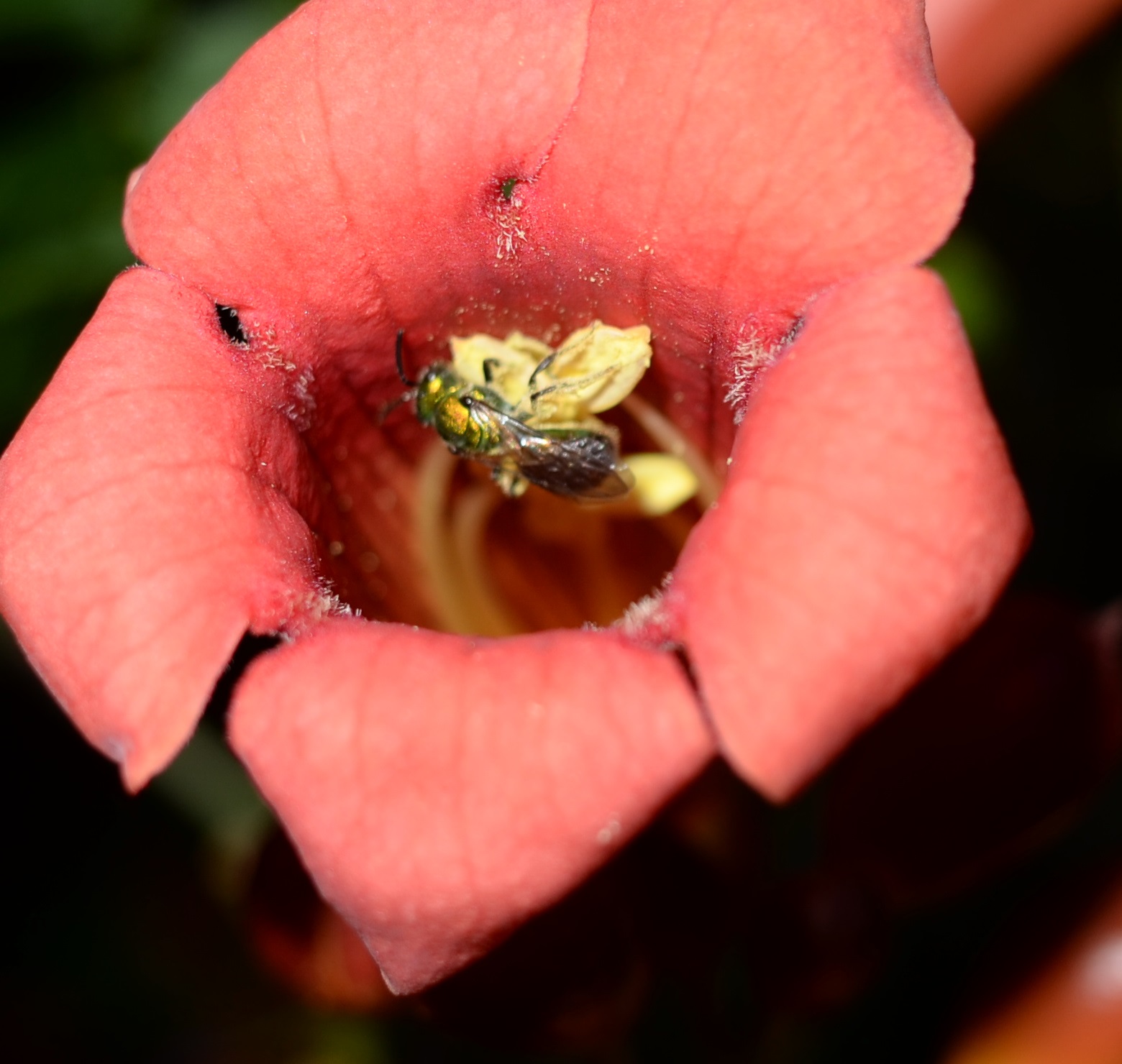
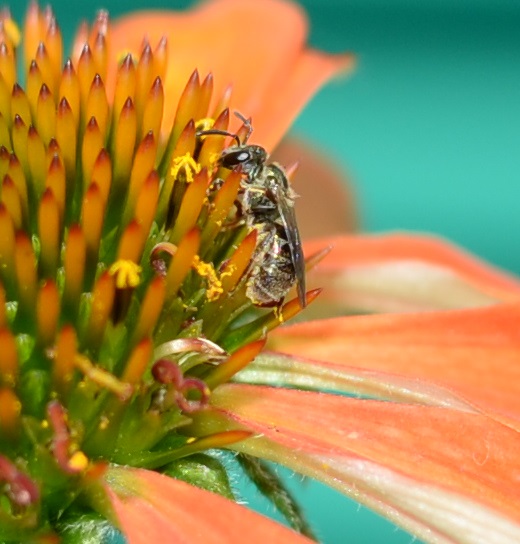
Just to see how good you are at distinguishing the European paper wasp from Ichneumon extensorius, here they are side by side.
I usually mix them up. But there are a few clues. Compare the antennae. Note that I. extensorius has a black last couple of segments
to its abdomen. If you don't notice those clues, you will probably have some trouble as they both have a complex set of yellow markings which look so similar. To finish off this week's tour of the hymenoptera, here is another ichneumon, which may be the same as the one
which was laying eggs in an insect's straw structure a couple of weeks ago.
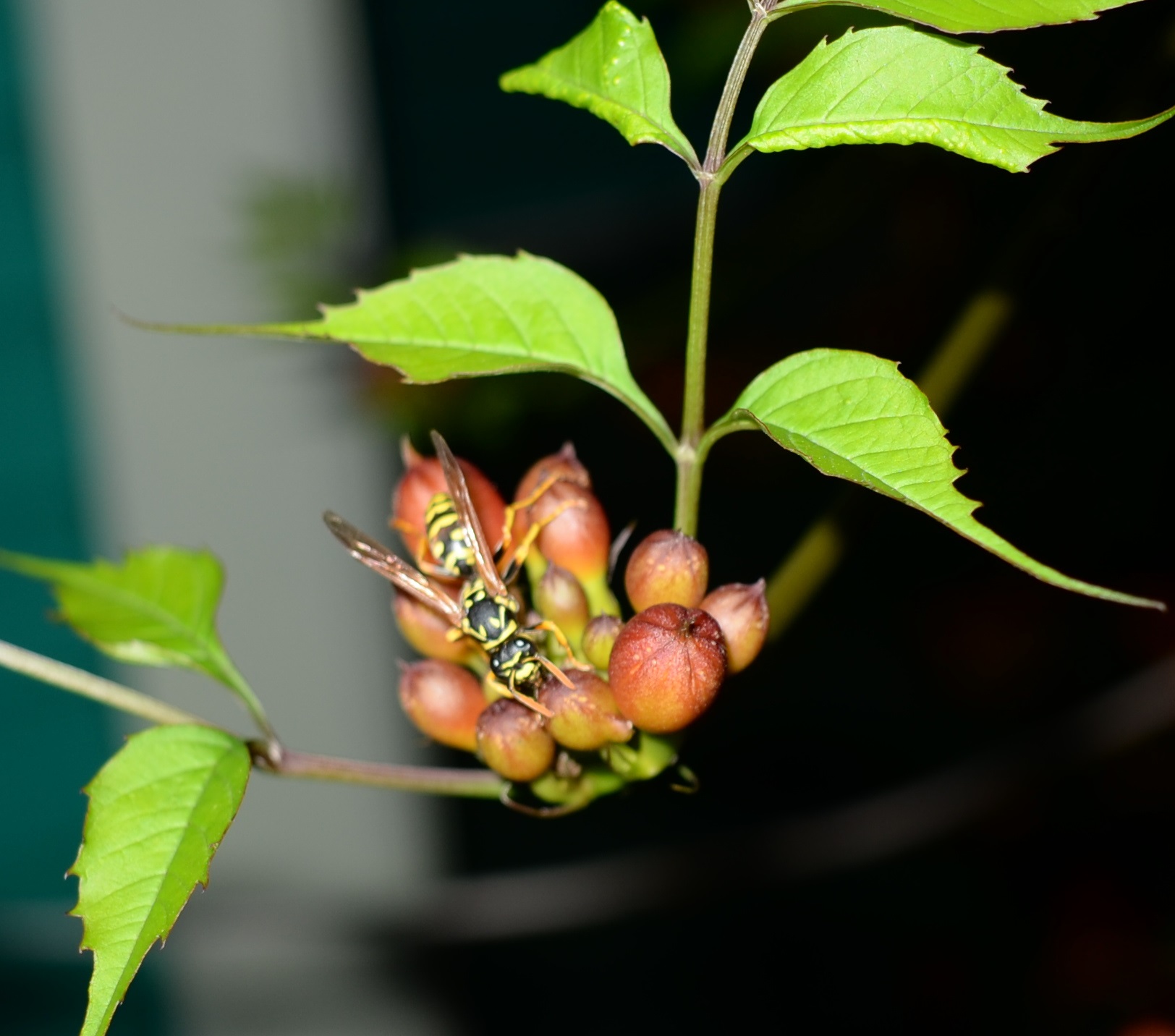
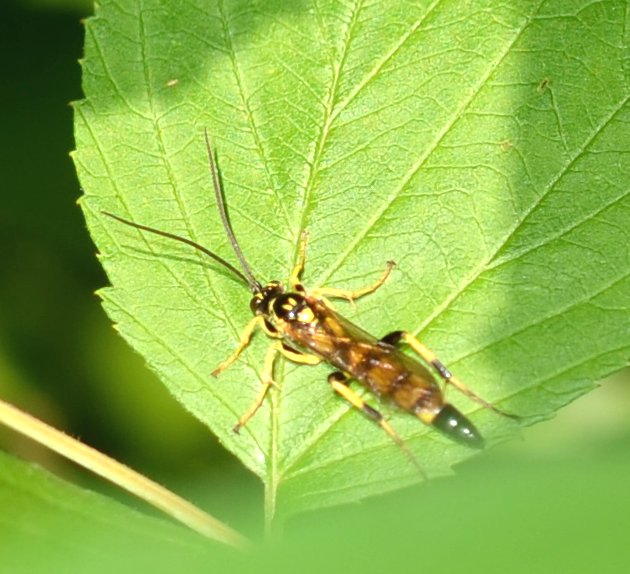
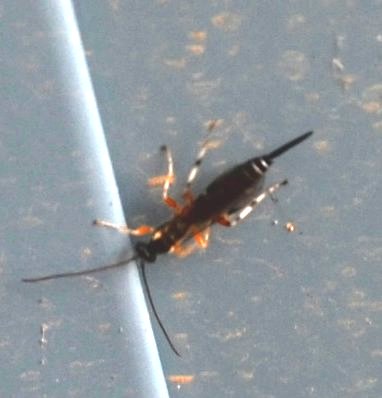
On the 13th of July, a friend brought me this lovely moth, which I haven't seen in years. It's the imperial moth and I could tell by its huge abdomen that it is a female. I popped her into a mesh cage and sometime in that day she laid a few eggs. Now they could be
fertilized but probably not. I gently pried the eggs off the cage and popped them into a plastic container covered with a sheer cloth.
That should give them enough oxygen. That night I put her into a wire mating cage. The holes in the cage are large enough for her and
any male flying around and sensing her pheromones to mate through. I could see at about twilight her abdomen opened a bit to send out
the pheromones but nobody came by to visit. It is the habit of these large moths to mate for nearly 20 hours, so I knew it hadn't happened. The next night she went out again in the box and not only did nothing happen but she seemed to have died trying. Now look, these moths live from 5 to 7 days, so if she died on the 16th, that means she could have eclosed (emerged) anywhere from the 9th to the 11th. So she might very well have mated sometime between the 9th and the 13th, so that the eggs could be fertilized. Usually the eggs take 8-10 days to hatch. it has now been about 5 days. So I'm biding my time and checking every once in a while. Any putative caterpillars will be happy on walnut leaves, which is good since I didn't cut down all the walnut saplings in the yard. Cross your fingers for us!

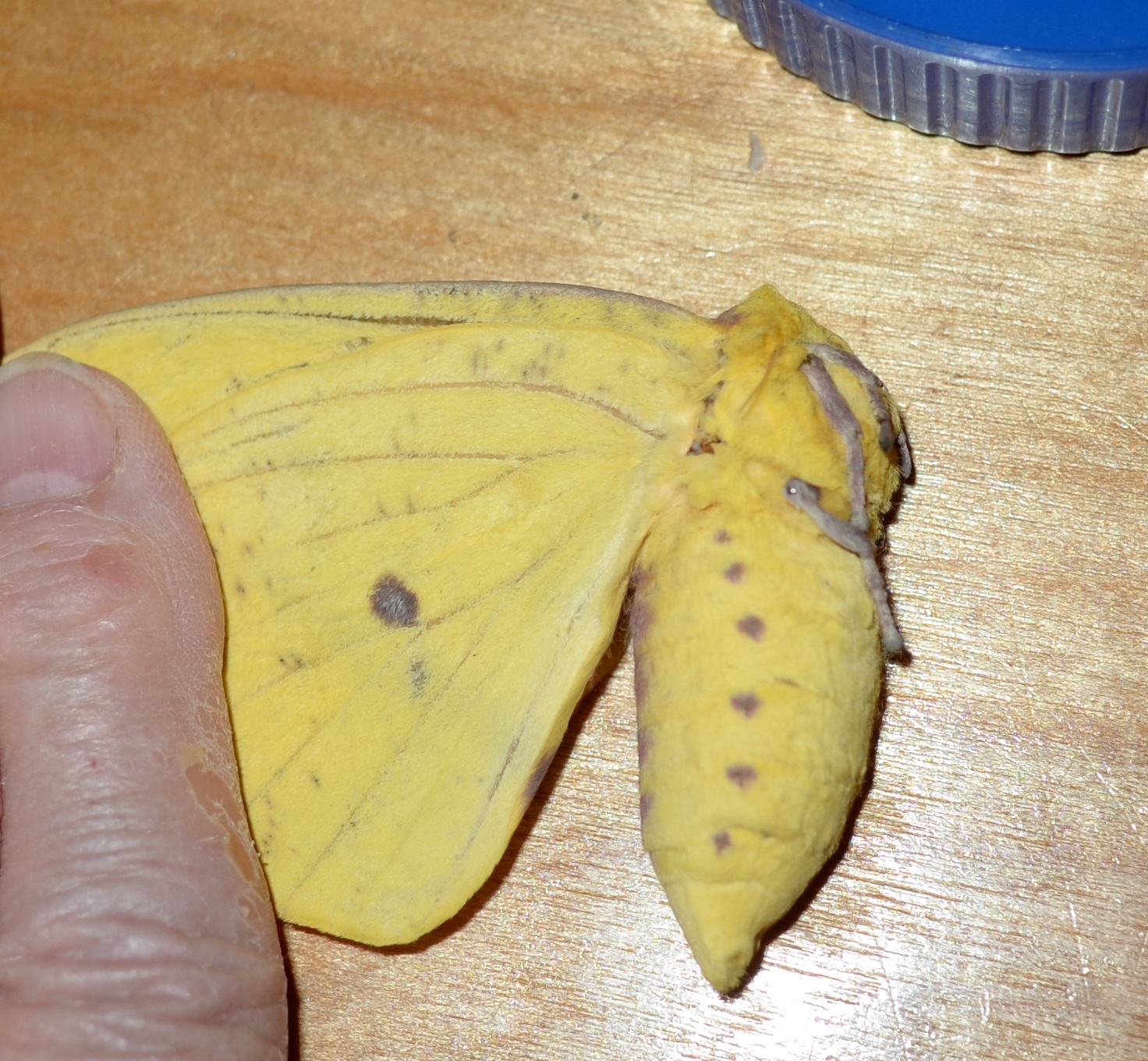

The same person also gave me a little plastic medicine bottle with this insect inside. It is a mayfly, which is classified as ephemeral, which sounds like the word for something that comes and goes. But the original Greek ephemera means "day", and this
beautiful little creature does indeed live in its adult form for ONE day. When I took it out it seemed to want to fly right away, but after holding it for a few seconds it settled down and let me have 15 seconds to take two pictures. Then it took off to try to cram something else into its one day. What a treat!
There were some more nice flies. This first one can squat on its back legs making it look as if it's standing in a defensive pose. Here is a front-on (ventral) picture and also the back view.
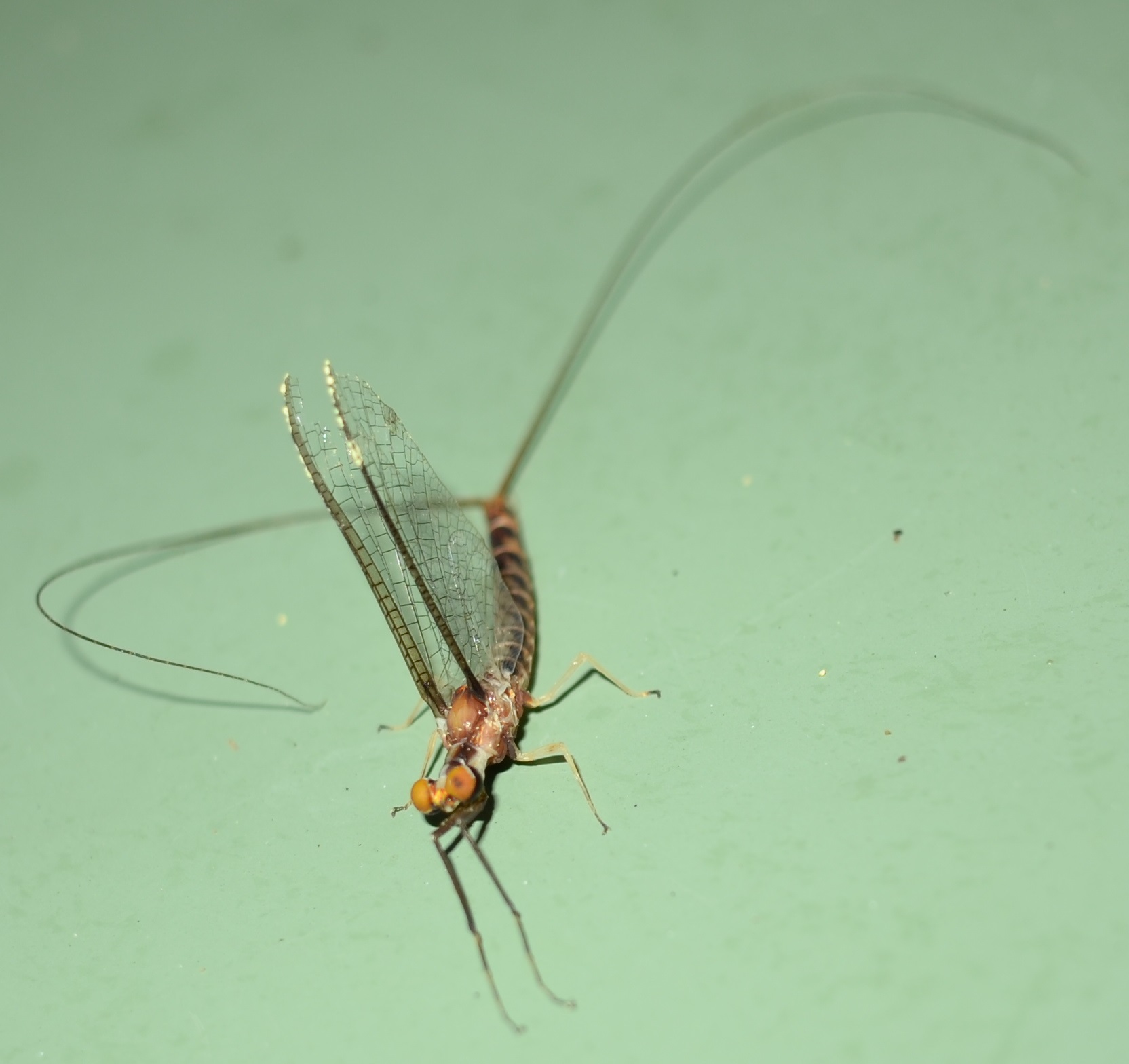
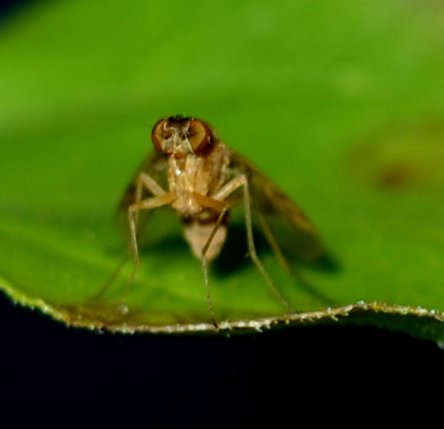
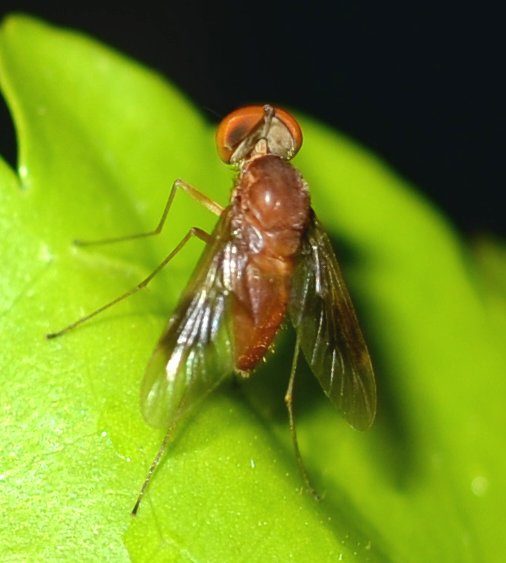
Here is a "flesh-eating" fly. It helps nature to clean up dead matter, and still it looks spiffy in its black and silver zoot suit. And here are two hover flies. The first is in a genus called Sphaerophoria. Inside that genus there are a lot of species but they are so hard to identify that most of the guys on bugguide stop at Sphaerophoria. Last year I had a different kind of Sphaerophoria hover fly show up often on the asters. The next one is a totally different genus of hover fly - it's by far the most seen around here all spring.
It is only about a centimeter long!
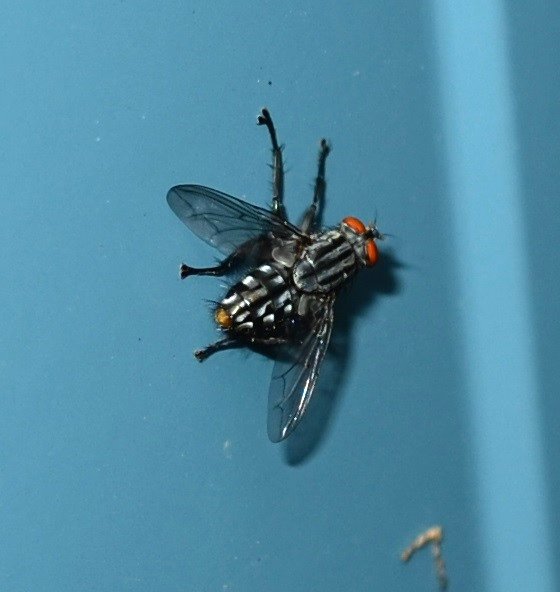

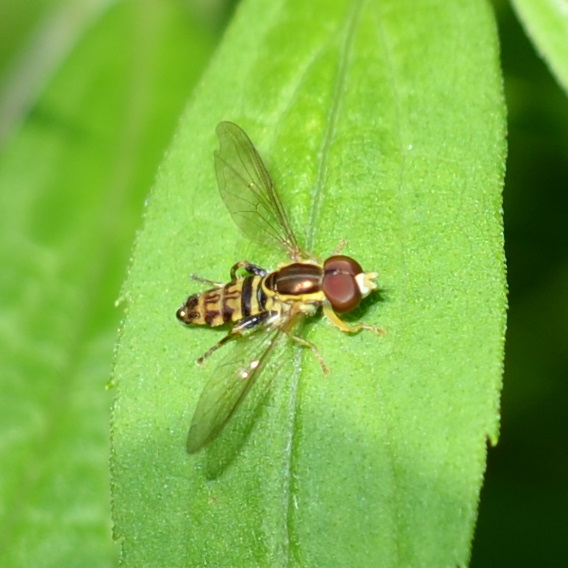
Did someone bang on the table and ask for the spiders? Well, here they are. Do you remember those tiny orange ones that were about a mm long (without the legs)? Some of those (Cross Orbweaver (Araneus diadematus)) are now a giant 5 mm! The same has happened to those
tiny common house spiders (chs) are now about a cm long. And the northern crab spiders have now produced their own 1 or 2 mm long babies.
 growing 7 15 15 2.jpg)
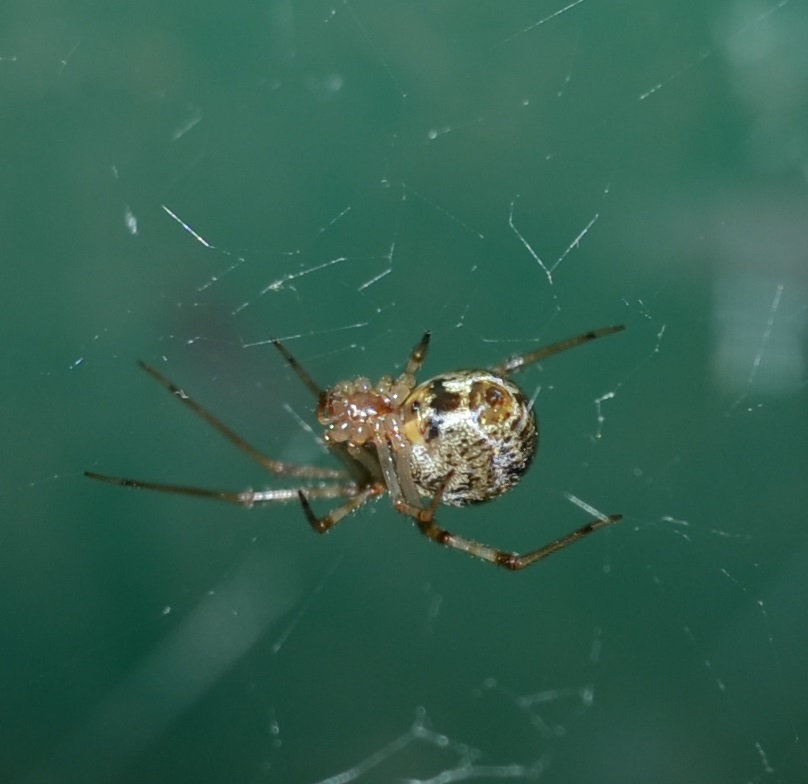

Let's look at some different flower pictures as we wend our way out the gate, ok? This is a Japanese painted fern with some of its
color variations. The magenta water lily was a bit washed out the first go-around. So I monkeyed with the hue and saturation and got
the fern about right, but it also introduced a blue shadow on the dark leaf. I kind of like it. Or as we say, it's not a bug, it's a
feature! Lastly, the color combination of the bright green katydid nymph and the orange zinnia.
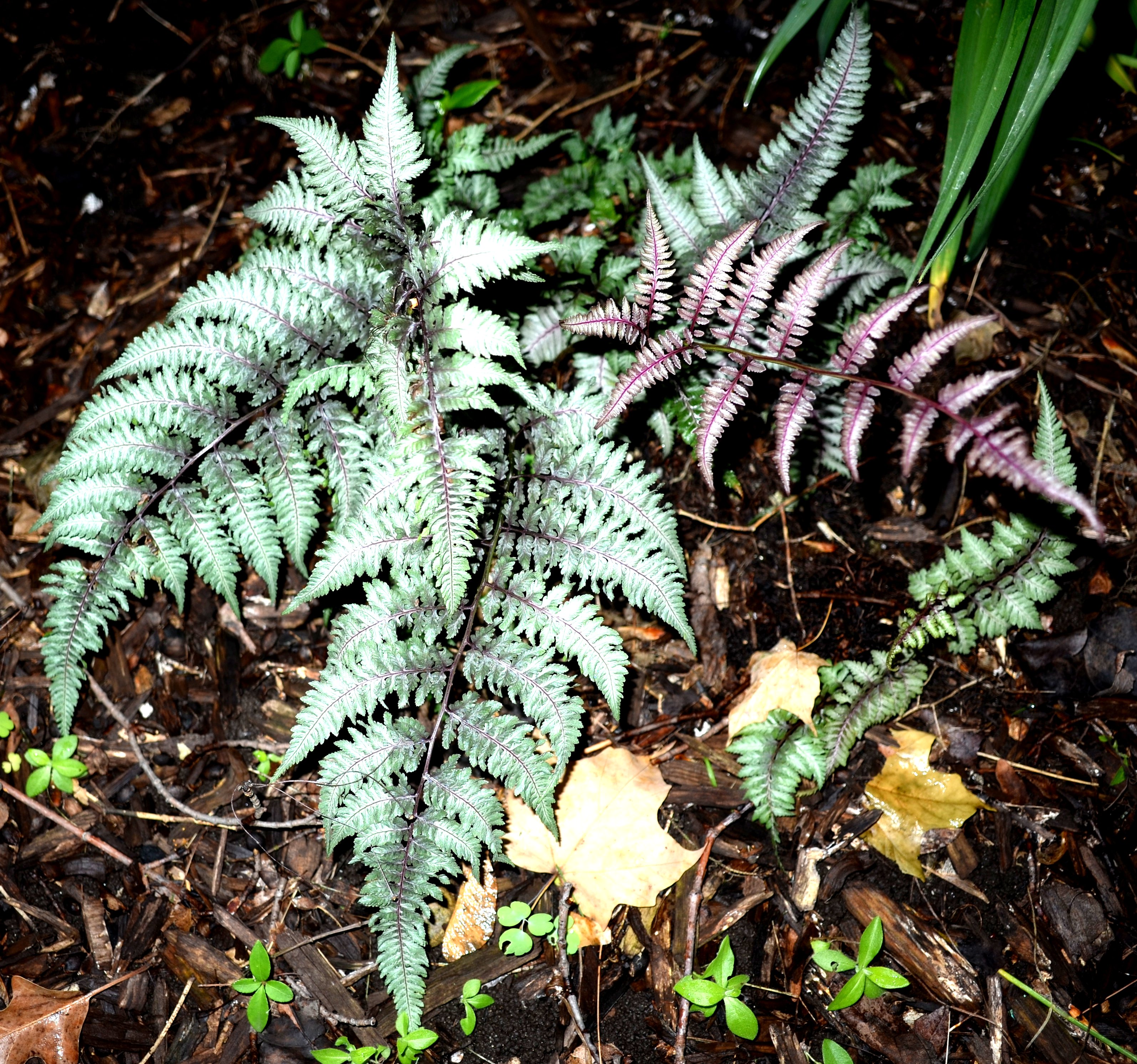


That just about does it for the week. I hope you enjoyed walking around with me and letting me tell you homey stories about my 1000 friends, as they say in facebook.
Back to July 12
On to July 27
Back to 2015 menu
Back to main menu
copyright Martha O'Kennon 2015











.jpg)
.jpg)







 ;
;
 ;
;























 growing 7 15 15 2.jpg)




